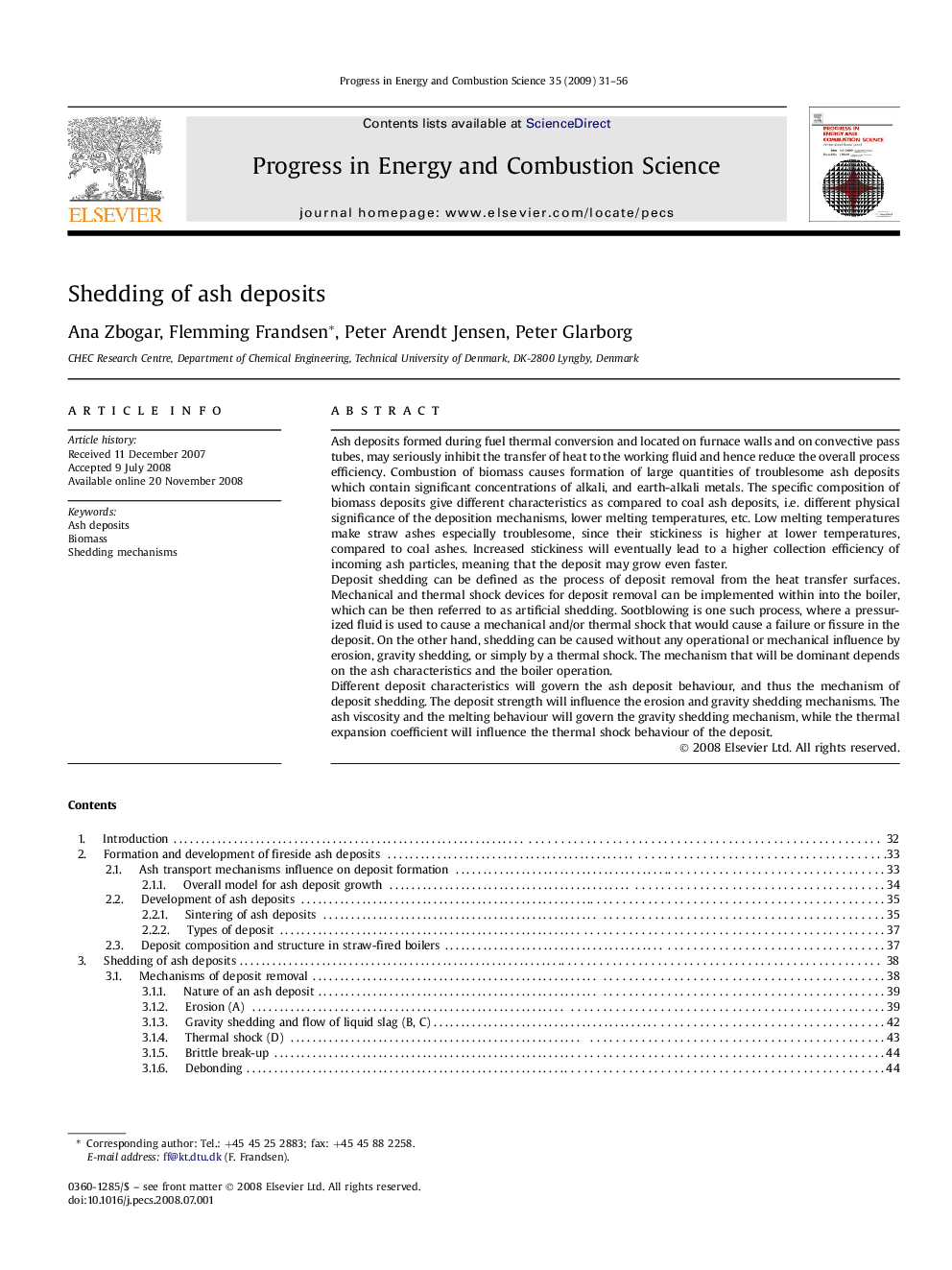| Article ID | Journal | Published Year | Pages | File Type |
|---|---|---|---|---|
| 241743 | Progress in Energy and Combustion Science | 2009 | 26 Pages |
Ash deposits formed during fuel thermal conversion and located on furnace walls and on convective pass tubes, may seriously inhibit the transfer of heat to the working fluid and hence reduce the overall process efficiency. Combustion of biomass causes formation of large quantities of troublesome ash deposits which contain significant concentrations of alkali, and earth-alkali metals. The specific composition of biomass deposits give different characteristics as compared to coal ash deposits, i.e. different physical significance of the deposition mechanisms, lower melting temperatures, etc. Low melting temperatures make straw ashes especially troublesome, since their stickiness is higher at lower temperatures, compared to coal ashes. Increased stickiness will eventually lead to a higher collection efficiency of incoming ash particles, meaning that the deposit may grow even faster.Deposit shedding can be defined as the process of deposit removal from the heat transfer surfaces. Mechanical and thermal shock devices for deposit removal can be implemented within into the boiler, which can be then referred to as artificial shedding. Sootblowing is one such process, where a pressurized fluid is used to cause a mechanical and/or thermal shock that would cause a failure or fissure in the deposit. On the other hand, shedding can be caused without any operational or mechanical influence by erosion, gravity shedding, or simply by a thermal shock. The mechanism that will be dominant depends on the ash characteristics and the boiler operation.Different deposit characteristics will govern the ash deposit behaviour, and thus the mechanism of deposit shedding. The deposit strength will influence the erosion and gravity shedding mechanisms. The ash viscosity and the melting behaviour will govern the gravity shedding mechanism, while the thermal expansion coefficient will influence the thermal shock behaviour of the deposit.
